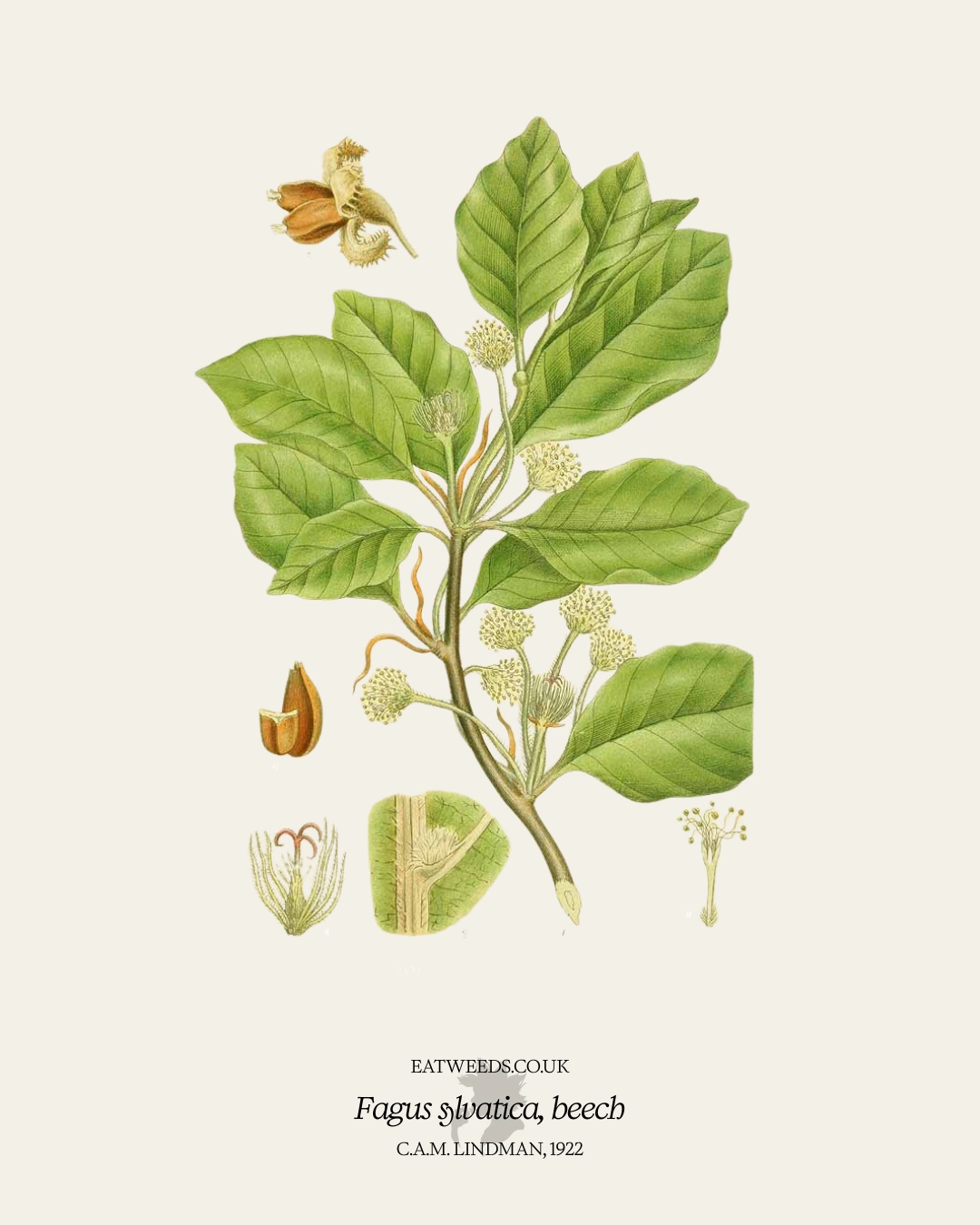Introduction
The Beech belongs to the same family as the oak and chestnut – Fagaceae. Its species name Fagus sylvatica refers to the tree’s woodland habitat.
There are differences of opinion about its arrival in Britain. Some sources lean heavily on the report of the Gallic wars in De Bello Gallico by Julius Caesar (100–44 BC), who said there were no beech trees in Britain and that the beech must have been introduced during the Roman occupation.
Other sources suggest that Caesar did not see enough of the British Isles to know any better. Archaeological finds of beech pollen in peat deposits suggest that beech trees arrived in Britain long before the Romans did.
The story of beech includes more than 100 uses for its wood, bark, leaves, flowers and nuts. If you can’t find a use for beech in your home and garden, enjoy its decorative features in parks and remember to appreciate its shade in summer.
Be warned. The beech is easily displeased, so mind your language and don’t swear lest the tree drops a branch.
Scientific name
Fagus sylvatica
Family
Fagaceae
Botanical description
Beech trees have smooth, grey bark and bright green, oval leaves with wavy, hairy margins. The fruits contain one or two shiny, brown nuts. Male flowers are numerous and tassel-like, and female flowers are displayed in pairs of erect clusters. The tree grows to about 40-140 ft.
Photo identification
Status
Deciduous. Native.
Habitat and distribution
Damp, heavy soils of forests, parks, avenues, and hedges.
Entymology
Parts used for food
Nuts/mast, leaves.
Harvest time
Spring to autumn.
Food uses
The ancient Greeks believed that beechnuts or ‘mast’ were the first food eaten by humans. The nuts are edible but should not be eaten in large quantities (see Cautions). The leaves have also been eaten as a salad vegetable.
Nutritional profile
Beech bark is thought to be astringent, but few data suggest other nutritional properties.
Recipes
Herbal medicine uses
Beech has been used in many healing rituals since ancient times, but traditionally the tree was a remedy for minor ailments such as boils, piles and other skin complaints. These uses may be due to the bark’s astringent effect.
Other uses
The wood has been used to make furniture, bowls, baskets and kitchen utensils. Tar from the timber can be used to make creosote.
Safety note
Excessive consumption of raw nuts may cause poisoning. The tree is best avoided in food and medicine when pregnant or breastfeeding.
Links
- Edible and medicinal wild plants of Britain and Ireland
- Forage in spring
- Forage in summer
- Forage in autumn
References
Cleene, M. de & Lejeune, M. C. (2002) Compendium of symbolic and ritual plants in Europe. Ghent: Man & Culture.
Hatfield, G. (2008) Hatfield’s herbal: the secret history of British plants. London: Penguin.
 Robin Harford
Robin Harford 